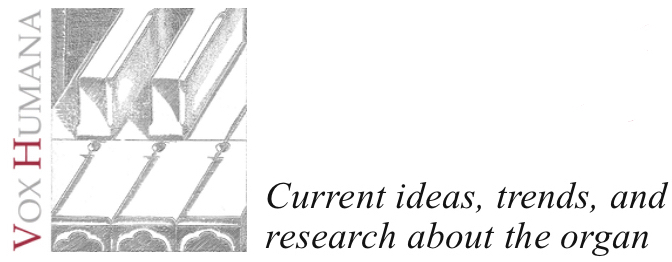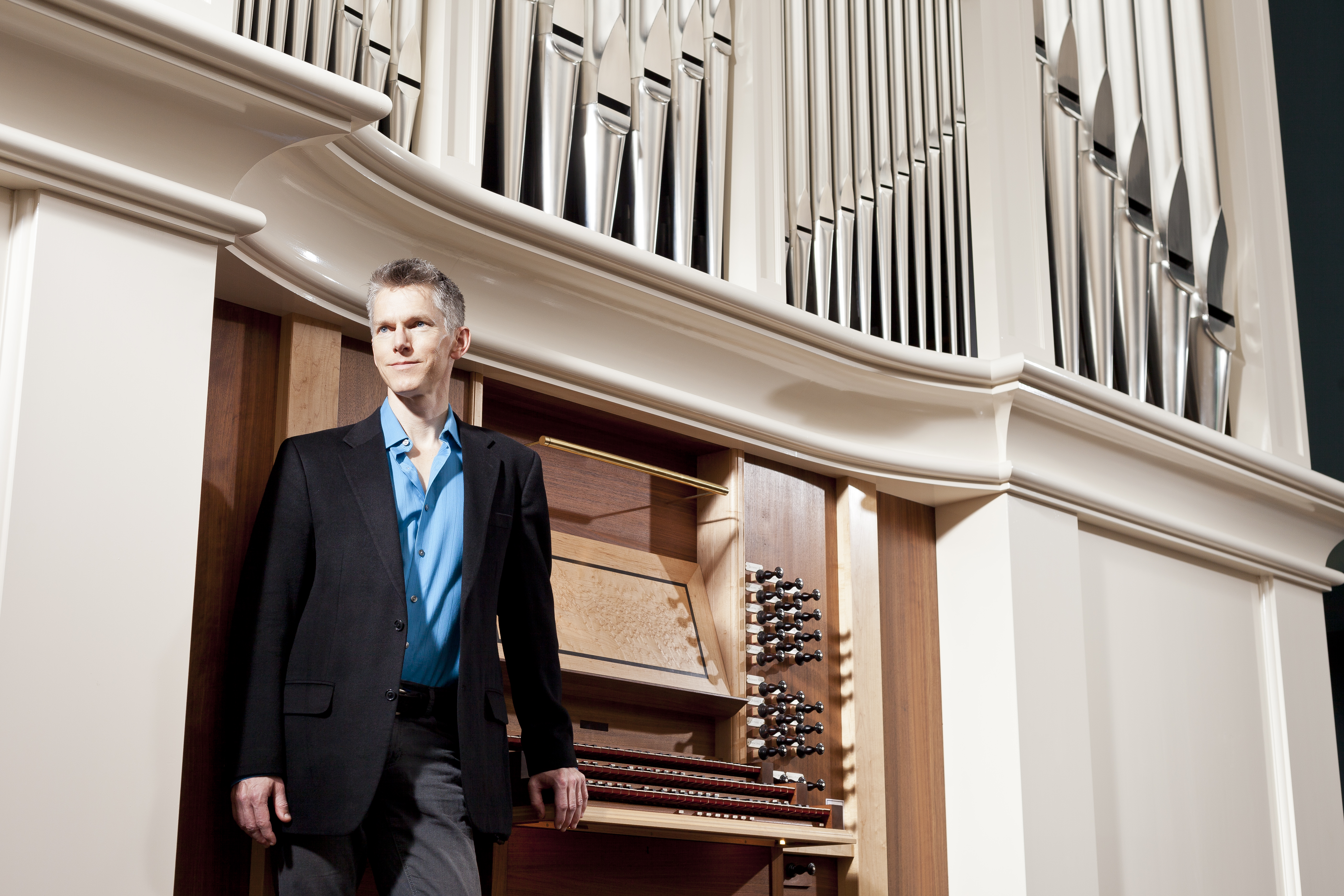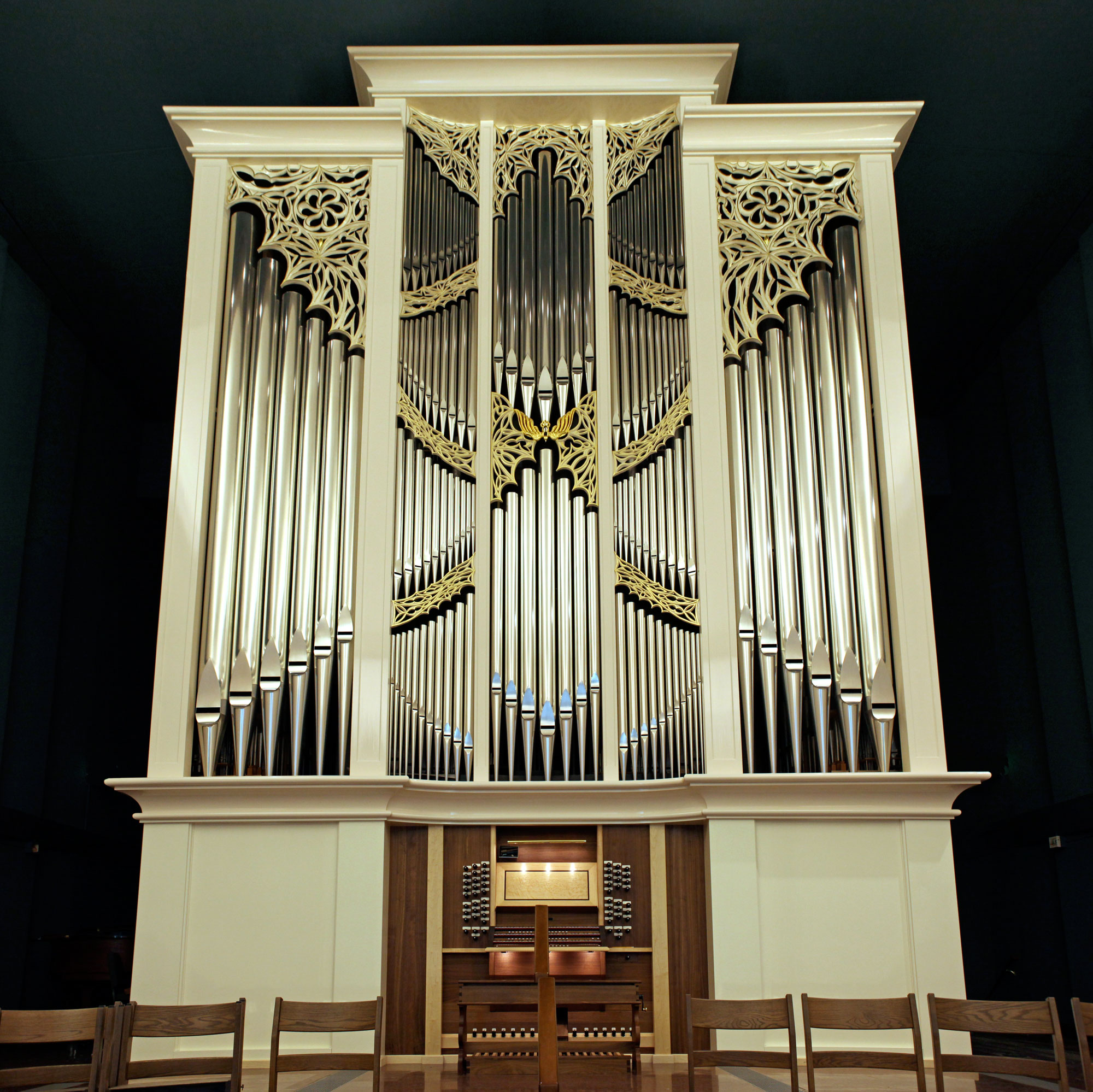


October 6, 2019
MATTHEW DIRST
–––––––––––––––––––––––––––
Reconstructing Bach's Organ Concertos

October 6, 2019
MATTHEW DIRST
–––––––––––––––––––––––––––
Reconstructing Bach's Organ Concertos

Introduction
Matthew Dirst, Professor of Music at the University of Houston, Artistic Director of Ars Lyrica Houston, and Organist at St. Philip Presbyterian Church, discusses his recent recording reconstructing Bach's concertos for organ in this interview with Vox Humana Editor Christopher Holman.
––––––––––––––––––––––––
Professor Dirst, thank you for agreeing to this interview. To start, could you talk about your musical training? Did you study piano from an early age? When did you take up the harpsichord and the organ and what attracted you to them?
My mother is a pianist and organist, and she had all four of us kids study piano from the age of six (it stuck with me, but not my siblings). I later did undergraduate and master degrees in organ and sacred music, and I took up the harpsichord for the first time as a master’s student at Southern Methodist University. After that, I ended up in Paris on a Fulbright for a few years, and from there I went to the west coast as a graduate student at Stanford University. I suppose harpsichord became a serious thing for me in Paris, and even more so in the San Francisco Bay Area for eight or nine years.
You've written many articles and several monographs about the keyboard music of J.S. Bach. Have you always been especially interested in Bach's keyboard music?
Absolutely, and from an early age. As a scholar, the keyboard music especially appealed to me because its reception history had never been charted to any great extent. When I was fishing around for a dissertation topic, a terrific Bach scholar was on the Stanford faculty at that point, Laurence Dreyfus, who was willing to work with me. I was very pleased with the information I found for a dissertation and later book (Engaging Bach: The Keyboard Legacy from Marpurg to Mendelssohn, available here). It's been a continual subject of fascination for me for many years, decades really. Since I play so much of this music it just seemed like a very natural thing to want to study in some detail.
Recently you made a recording of your reconstructions of Bach's concertos for organ. Could you tell us about how this project came to be, and how you went about reconstructing these works?
In 2012, there was a joint conference organized by the Westfield Center for Historical Keyboard Studies and the Eastman Rochester Organ Initiative entitled "Bach and the Organ." Afterward, I was asked to edit some papers that were presented there to become a volume of Bach Perspectives, the yearbook of the American Bach Society, which was eventually published (available here). Several papers discussed the idea that there may have been organ concertos by Bach at some point, and that he turned pieces that were originally harpsichord concertos to cantata movements with obbligato organ later on.
I became fascinated with the prehistory of these pieces, as have a number of scholars over the years, and since I was working with those essays on this topic, I thought it was a good time to reconstruct these works and record them. The pieces Bach had arranged into cantata movements had already been recorded, of course. But nobody had, to my knowledge, put several of these pieces together as reconstructions and used only the instruments Bach probably had available to him in Dresden in 1725. Since I had good players at my disposal and a terrific organ to work with, I decided to go ahead.
What is the instrumentation of the original organ versions, and how did you reconstruct them for organ?
As far as we know, the "original" versions don’t really exist (unless somebody finds a manuscript from the early 1720s, which is when it seems Bach was experimenting in this genre). The sources we have are either cantata sinfonias from just a bit later, or the harpsichord concertos; Bach reused a number of these movements and mixed and matched them. We have a collection of harpsichord concertos that come down to us in a really fine manuscript from the late 1730s. Those pieces are idiomatically designed for the harpsichord, but it’s easy to see the transfer from organ solo in a cantata movement with a thicker orchestration, usually including winds, to the chamber-like harpsichord versions that are only for strings. Looking at those different versions of the piece, it's not so difficult to extrapolate backwards and get rid of the wind parts; we also know from one contemporary report that Bach apparently played several organ concertos at a famous concert in Dresden, with “soft accompanying instruments.” Oboes are not soft, and the organ galleries in these spaces were not huge — in other words, they could not have accommodated 20 players; it's more than likely he had single violins, a viola, and a cello, and perhaps someone playing continuo.
In our case, I decided to use a plucked instrument player (lute/guitar) instead of harpsichord, and from there we went toward what would sound good on the organ. I wrote out some of what I thought might be a reasonable approximation of what Bach played at this program, but at other points, I really had to guess. And it very much came down to what sounds good, what do my fingers want to do, and what’s going to fit well with the final mix. It was a process of discovery, really, and if I ever edit these reconstructions, I suppose I’ll have to decide on exactly which notes to put on the page. But in a sense that’s kind of at cross-purposes with the whole ethos of the concerto, where the soloist is supposed to be a virtuoso who’s showing off and improvising. I’ll admit, I’m a bit reluctant to actually put them to paper, but I suppose I’ll get around to it at some point. Though I may have to listen to my own recording just to remember what the notes were in a few cases...
You used the 2008 Paul Fritts organ at St. Philip Presbyterian Church in Houston, Texas, which is set in A=440, the same pitch as the modern piano. But when reading about the issues of pitch in the few Bach organ obbligato parts, current scholarship generally accepts that the large organ was at A=465, while the orchestra played at A=415 — this means that the organist plays a whole step higher than the orchestra (for instance, in a concerto set in D major for the orchestra, the organist would have to play in E major, which certainly requires some significant adjustments). How did this play into your reconstruction and performance?

Bach was dealing with a whole step transposition, which isn't really a problem for strings or for the keyboardists. Nowadays, since organs are almost all at A=440, we're dealing with a half step difference, and in unequal temperament, that becomes really problematic. The one small area where it does work is going from E-flat major to E major, but for a concerto in D major, you’re out of luck [the resulting transposition, C-sharp major, is unpleasant in most unequal temperaments]. Our solution was to perform on instruments with gut strings, but tuned up to A=440. And for the one piece (a Handel concerto) that does require a couple oboes, we used modern instruments.

How did you determine what registrations to use? Are there sources that can give us any definitive information about registering organ concertos in the German baroque tradition?
The best sources are the organs themselves, especially those by Gottfried Silbermann, Hildebrandt, and Trost. Many of these have been restored beautifully and are really the best guide to this music. Failing a trip to Germany with the ensemble to record it, my best solution was to make it at St. Philip (where I am organist and have great access to the instrument). Knowing something about the sound world of a central German organ in the early eighteenth century is the most important thing, and then reading the relevant sources is a good guide.
Of course, there's one document in Bach’s own hand that says he was very fond of the 16’ Fagott as an ensemble stop in chamber music, which is something we don’t really think of as worthwhile (who wants to hear a 16’ reed snarling away in an ensemble line?). However, in a solo movement like these concertos, where the solo line for the organ is in the right hand, and the bass line for the left, playing the Fagott in the bass makes perfect sense. It actually works quite well, and it provides a nice 16’ line that is always audible and distinct underneath a small ensemble. Here it is in action:
Johann Sebastian Bach: Concerto in E Major, BWV 1053: III. Allegro, reconstructed and performed by Matthew Dirst with Ars Lyrica Houston.
My other registrational choices were guided in part by a knowledge of what Bach might have had in his head and what he might have been hearing in central German organs at this time, but also what I have available to me on this wonderful Fritts organ. It has an abundance of foundation stops, most of which I used on the recording, for instance, the Principal 8' in this movement:
Johann Sebastian Bach: Concerto in D Minor, BWV 1052: II. Adagio, reconstructed and performed by Matthew Dirst with Ars Lyrica Houston.
And there are several mutation stops, like here:
Johann Sebastian Bach: Concerto in G Minor, BWV 1058: III. Allegro assai, reconstructed and performed by Matthew Dirst with Ars Lyrica Houston.
There are quite a few small reeds which get a workout in the recording, such as in this example:
George Frideric Handel: Il trionfo del tempo e del disinganno, HWV 46a: III. Allegro, ma non troppo, reconstructed and performed by Matthew Dirst with Ars Lyrica Houston.
You've played many of these concerti in the solo harpsichord versions. How does your approach change based on the instrument?
On the harpsichord, you can play a lot faster, which explains why there are so many more chords and notes on the page — the harpsichord needs more sound to come out of it to make itself heard in even a small ensemble. In the organ versions, based on Bach's organ sinfonia movements from cantatas (which form the basis for some of the reconstructions), the texture is not nearly as full, usually two voices at the most.
For example, in the Concerto in G Minor, BWV 1058, there are no earlier cantata versions of obbligato parts. But it shows signs of being copied, and the keyboard part from one of those earlier sources is simpler and may have been for organ. In the reconstruction, I had to reduce the right-hand part of the outer movements of that piece to a fairly large degree just because the amount of filigree that works well on the harpsichord doesn't sound so good on the organ, simply because the pipes take longer to speak. A reduced texture there became crucial, and that's where my instincts took over and I played what I thought sounded good, not worrying about notating it carefully:
Johann Sebastian Bach: Concerto in G Minor, BWV 1058: I. Allegro, reconstructed and performed by Matthew Dirst with Ars Lyrica Houston.
What are your other current research interests?
I'm on sabbatical this year, so hopefully I'll be able to spend some time working on an edition of these concerti reconstructions.
––––––––––––––––––––––––
Editor's Note
The entire recording The First Organ Concertos: Reconstructions of Works by G.F. Handel and J.S. Bach can be found on The Gothic Catalog, iTunes, and Spotify. The Vox Humana Editorial Board offers our sincerest thanks to Loft Records for their kind permission to include these recorded examples.
––––––––––––––––––––––––
Widely admired for his stylish playing and conducting of Baroque music especially, Dirst was hailed by the Dallas Morning News for his “crisp but expressive direction” of the Monteverdi 1610 Vespers, which it named “Best Classical Performance of 2010.” Early Music America described his recent solo recording, of harpsichord works by François and Armand-Louis Couperin (Centaur), as a “stylish, tasteful, and technically commanding performance…expressive and brilliant playing.” Dirst’s recordings of music by Alessandro and Domenico Scarlatti and J.A. Hasse with Ars Lyrica on the Naxos and Sono Luminus labels have earned a GRAMMY nomination for Best Opera 2011 and widespread critical acclaim.
Professor Dirst’s academic degrees include a PhD in musicology from Stanford University, MM in organ and Master of Sacred Music degrees from Southern Methodist University, and a BM from the University of Illinois. A Fulbright scholar to France, he received the coveted prix de virtuosité in both organ and harpsichord with teachers Marie-Claire Alain and Huguette Dreyfus and did further harpsichord study with Alan Curtis at UC Berkeley. He also serves as Organist at St. Philip Presbyterian Church in Houston.
The views and opinions expressed in this article are those of the author, and do not necessarily reflect the position of Vox Humana.